Table of Contents
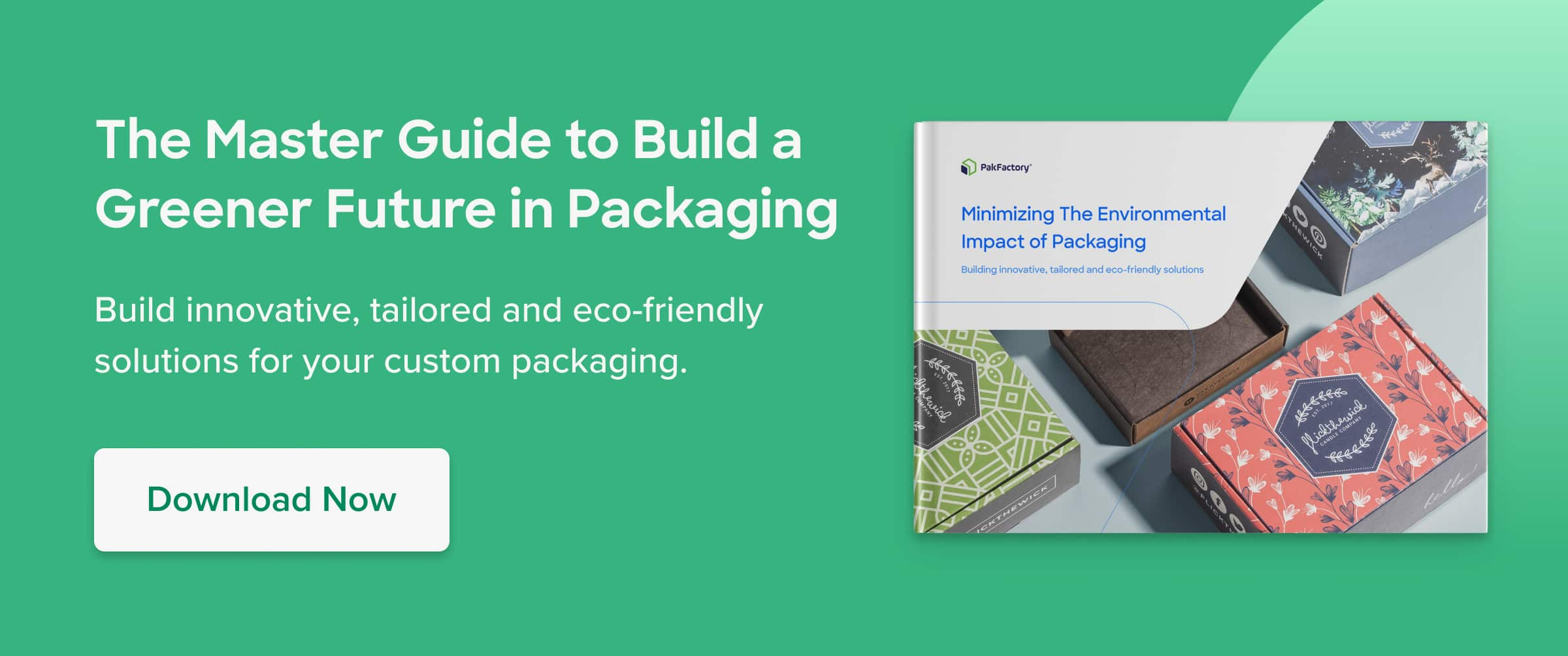
We can all agree that the box we use for our gifts is as important today as it was many years ago… only now, the priority is sustainable packaging solutions.
Whenever we open a box, deep down we understand that the experience is sometimes more important than the product itself
If there is an overload of packaging materials to cover an insignificant object, what would that say about the company?
In our generation, climate change is the hottest topic to discuss from the political scene to even at the dinner table.
Industries are investing more in sustainable practices and environmentally friendly products.
The packaging of a product has become so important that it can determine your bottom line.
According to Recycling Magazine 74 percent of consumers said they would pay more for sustainable packaging, and nearly one-fourth are willing to pay for an increased cost of 10 percent or more!
Some companies need unique eco friendly packaging ideas. While others continue to use the everyday cardboard box.
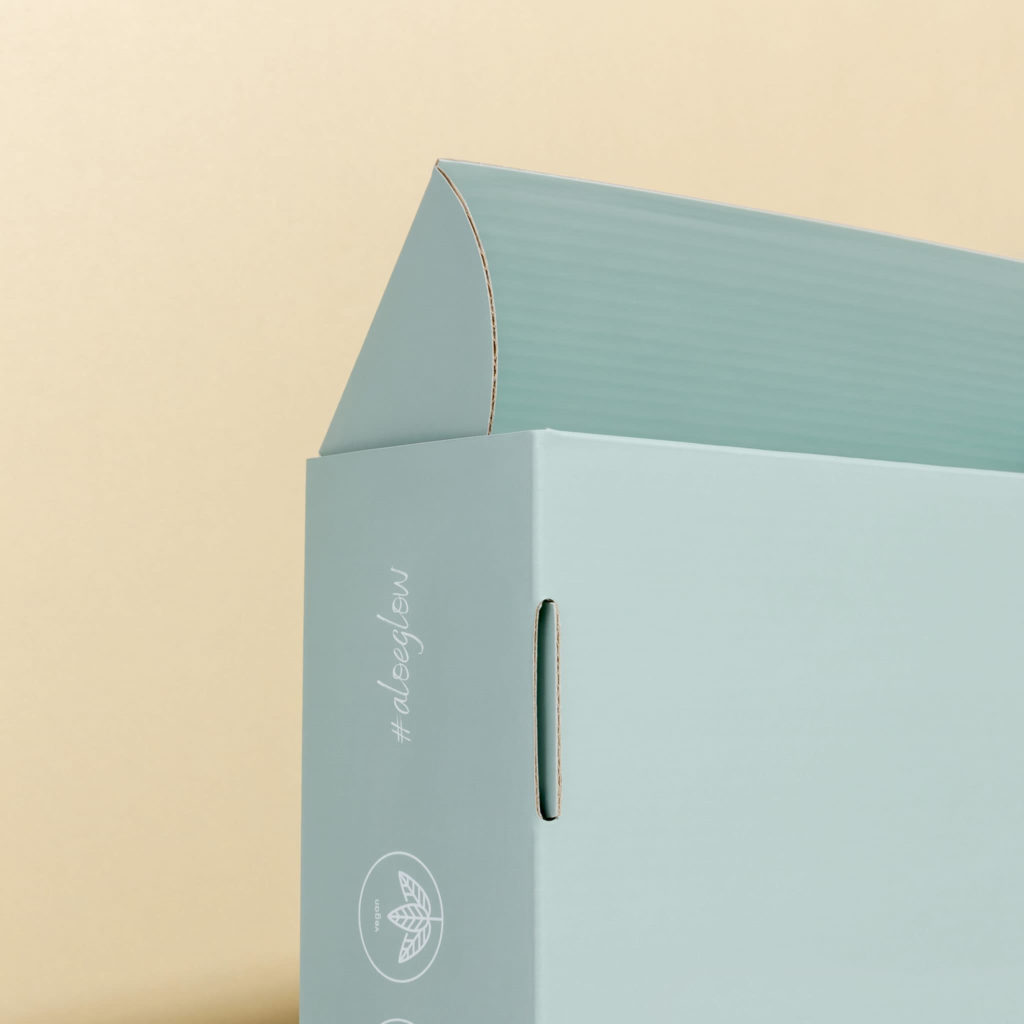
Either way, companies have now become even more aware of how they pack their products.
The following eco-friendly packaging materials apply to a wide array of industries. These include;
These trends are a testament to the consumer’s increasing need for eco friendly packaging materials and manufacturing processes.
Furthermore, they communicate a strong signal that the balance between consuming and waste is completely in our hands and well within our reach.
Gift Wrapping
You thought you had time, but it’s arrived sooner than you thought.
A very short deadline for gift wrapping. One that involves meticulously and flawlessly cutting, folding, plastering, and tying a piece of paper around a highly complex surface: the box.
Being the reverse engineering enthusiasts that we are, let’s start with some garnish and present you with the tree sprig:
There’s no better way to let your enviro-conscious loved ones know that you support their lifestyle than grabbing a few broken branches from your local tree store or on your walk of the day, to spruce up your gift.
It’s easy on your strained pockets, prolongs the usefulness of the cut tree, and allows you to stand out amongst a sea of ribbon bows.
Furoshiki
Furoshiki, the Japanese art of gift wrapping, illustrates the concept of reusability in masterful fashion by favoring cloth fabric in place of traditional wrapping paper.
Although you have the option of purchasing more elegant designs, you can construct your own Furoshiki cloth with leftovers from previous projects or simply a blouse you don’t fit into anymore.
Either way, the gifted cloth can be passed on and re-wrapped indefinitely, eliminating waste and serving as eco-friendly packaging options.
Furoshiki lifts the burden of having to measure and cut your wrapping paper so that it covers your gift completely.
The cloth simply assumes the form of its resident, whether it’s an article of clothing or something more rigid.
Also, the Furoshiki method can turn cloth into a handbag or a scarf.
In essence, it is more of a school of thought; it teaches us humbleness, the importance of tradition, courtesy, and consideration for our eco friendly packaging.
Marie Kondo, the sweetheart of de-cluttering, provides us with a useful how-to guide on Furoshiki:
Remember the milkman who used to deliver fresh farm milk to your beloved grandmother’s door when you were little?
No one dared to throw away the glass bottle container once the milk had been consumed, for there was a sizable refund upon returning the jug.
Today, companies such as TerraCycle’s Loop are revolutionizing this traditional process by operating as a re-usability platform open to consumer goods companies that are eager to contribute to sustainability initiatives
Loop offers its B2B clients, which include the likes of Haagen-Daz and Tide, the opportunity to sell its products to consumers in a container that could be easily returned upon use, sanitized, and automatically refilled.
The tote bags in which the orders arrive are also reusable.
An Economically Attractive Arrangement
The business model benefits everyone involved. Businesses reduce their packaging material costs, gain positive community exposure, re-brand themselves as environmentally mindful, and reap actionable data on an emerging subset of their target demographic.
Furthermore, the platform itself receives partner fees and invaluable consumer and vendor data analytics, amounting to substantial, massively scalable revenue.
The monetization of sustainability propagates further sustainability efforts by incentivizing the participation of the most powerful players in the community and industry.
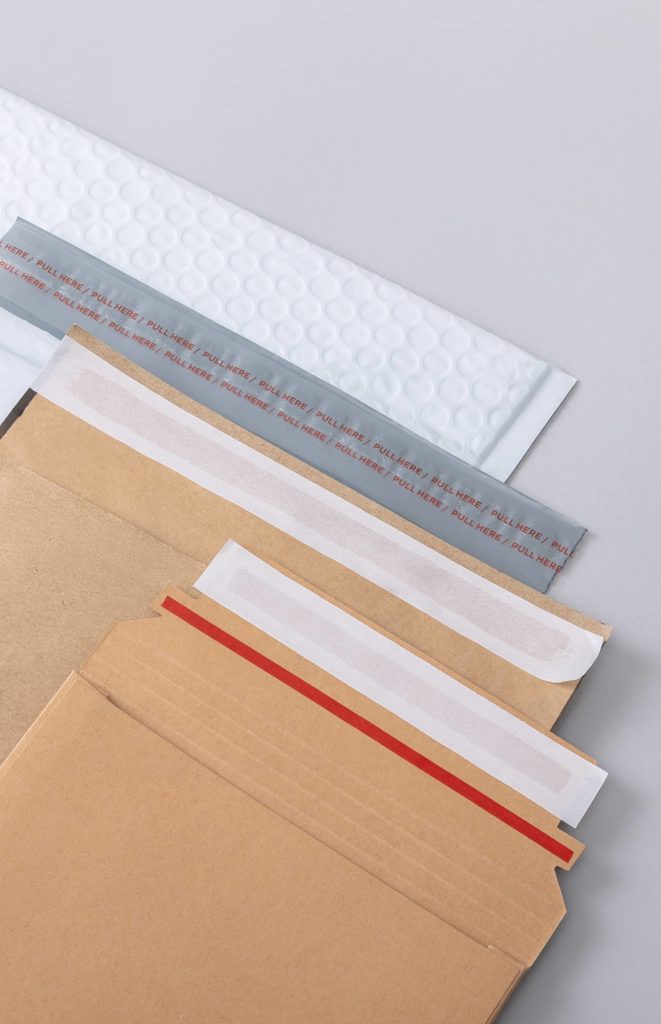
Additionally, we can see that there are no sacrifices made to aesthetics when custom boxes and containers are made sustainably.
This sustainable wine carton boasts half the carbon footprint of your conventional glass wine bottle.
Unocups, seen below, is another product of sustainable thinking, breathtaking because of it’s sheer simplicity.
They’ve managed to cut out the coffee lid altogether by designing the cup so that it folds into a lid, as seen below.
Given the millions of cups of coffee and tea consumed every year, it’s easy to see the phenomenal reduction in the total carbon footprint this innovation could bring in the next few years.
Upcycling
Many have become this person; taking up DIY projects, upcycling home decor, creating art pieces.
Our generation seems to have become much more creative with the amount of extra time on their hands.
If you’re still a bit unsure on the distinction between recycling and its artsy cousin, upcycling e-commerce store hipcycle provides us with two useful infographics that provide clarity:
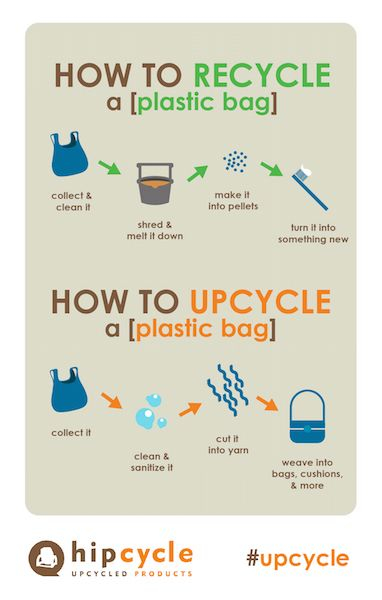
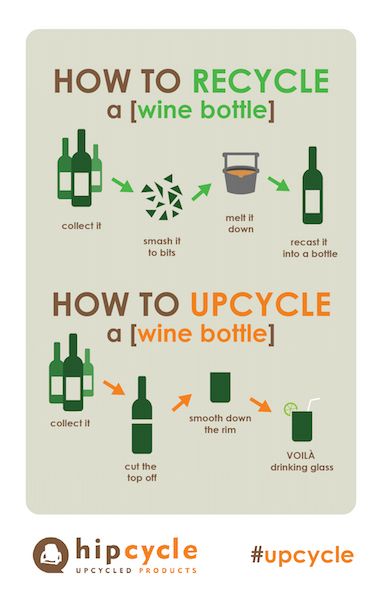
Upcycling using custom eco friendly packaging is a trendy, idea and doesn’t leave you scrambling for last-minute gifts on Amazon.
Minimalist Eco Friendly Packaging Ideas
Minimalist eco friendly packaging designs save on storage space and material costs.
The potential reductions in emissions are evident, but it’s not easy. Simplicity requires great thought.
Eco friendly packaging needs to offer certain protective elements and the supply chain may sometimes be inflexible in accommodating logistics for contemporary, eco-friendly designs.
Furthermore, minimalist packages may sometimes need to be pleasing to the eye, especially if the package is just as crucial of a feature as its contents.
With a lower surface area to work with, minimalist packages need to thrive within the limited space they have, and that requires talent and a forward-thinking mindset.
There’s nothing to hide behind with minimalism. There are no decorative elements that can mask and compensate for flaws.
Everything is laid bare, which poses both a challenge and an opportunity to flourish.
There’s a Bottom Line to Minimalism
There’s a pay-off with minimalist packaging strategies; increasing skepticism and shortening attention spans have created a consumer demographic that hates confusing inundations of information
The modern need for clarity and transparency rewards minimalist packaging solutions through increased loyalty and trust.
To top it off, minimalist packaging can become a part of a highly successful differentiation strategy in a world where brands and SKUs abound in retail stores.
Furthermore, with e-commerce becoming the main means for shopping, there is no need to embellish and plaster your eco friendly packaging if it’s going to be sitting in someone’s shared mail room rather than on the shelves of a retail store.
It’s the unboxing experience that counts!
The abundant white space of minimalist package design works to accentuate the message (sustainability) and branding, emboldening the product’s visibility.
Marian Obando knows how to work with white space and – no space.
With her revamped custom egg carton design show below, she craftily employs the sustainability principles of re-usability, minimalism, and post-consumer recycling.
Minimalist Eco Friendly Packaging Materials
Minimalism can also imply the minimal use of materials.
Have you heard of the circular economy?
It aims to minimize plastic waste by continuously circulating resources through the entire product life cycle as it pertains to the environment: use, reuse, recycle, process, design, and produce.
The goal is to prolong the use of a product by transforming it into a resource input for another product.
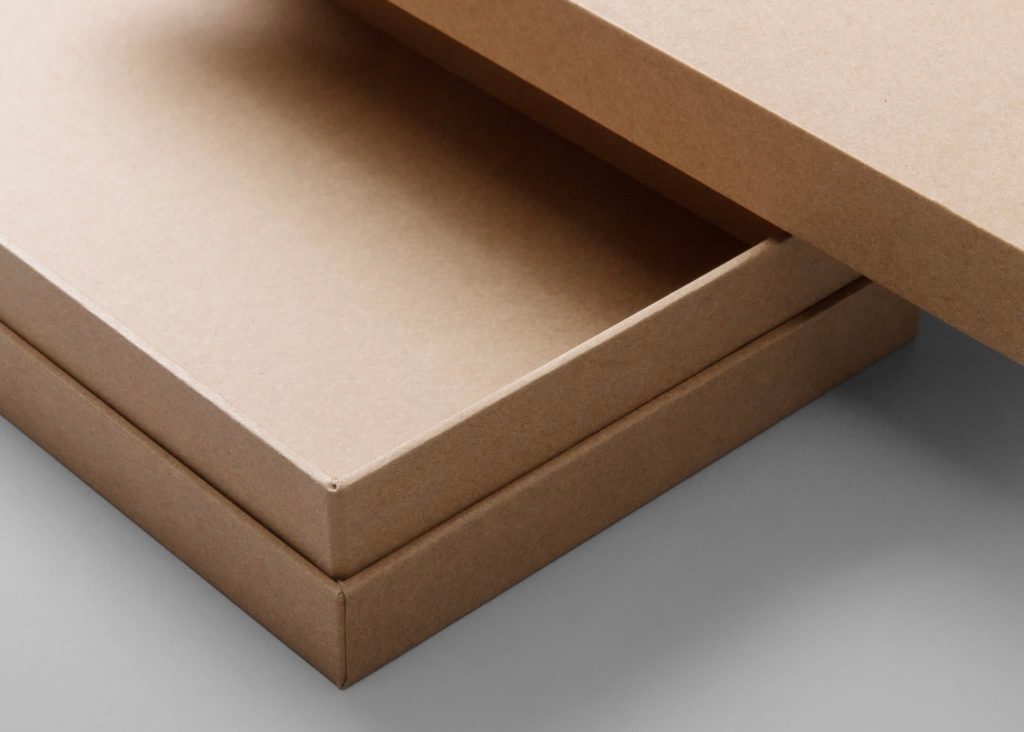
Hence, the circular cycle increases the productivity and efficiency of goods, which delays or eliminates the polluting disposal process.
Mono-Materials
Mono-materials are a positive contributor to the circular economy because they facilitate recyclability and reusability.
Mono-material or single material sustainable packaging makes recycling easier for both the buyer and the facility.
The recycling plant reduces emissions by eliminating the material separation process.
An example of a mono-material solution is Ecolam, a 100% polyethylene-based set of laminated eco friendly packaging products that signal a greater alignment between the Indian production sector and new government sustainability regulations.
Packsize, a high-tech custom packaging solutions company, reduces the size of its boxes to its minimum using sophisticated measurement technology that assesses the dimensions of the product.
Suppliers who use Packsize save on shipment and logistics costs, and that inevitably translates to what the vendor pays.
Also, minimal box sizes reduce the inventory costs of the vendor.
Packsize eliminates the need for custom box fillers, allowing for further reductions in carbon footprint.
Bioplastics
Bioplastics feel like plastic but are based on naturally available and replenishable biomass sources such as milk, wheat, and meat protein.
However, not all bioplastics are biodegradable.
This design studio in Iceland was able to manufacture meat packaging from animal skin.
The eco friendly packaging is minimalist and reflects sustainable consumption practices that use the whole animal, reducing plastic waste.
The boiling process used to produce the eco friendly packaging skin minimizes air pollution. Most importantly, the absence of synthetic plastics alleviates the heavy burden caused by rising greenhouse emissions.
Saving Ink
Despite what you may think about soy, it does wonders for the environment when used as sustainable alternatives to petroleum-based ink.
Soy and vegetable-based inks don’t release harmful organic compounds that can have negative environmental and human health effects.
It makes recycling easier too, as soy ink is easier to de-ink.
The environmental benefits don’t stop there: soy ink is also four times more biodegradable. Last but not least, soy ink spreads further, reducing ink costs and waste.
Edible Eco Packaging
The best form of recycling is the one that happens in your gut.
No recycling plants are involved.
Complete biodegradability that starts and ends with you. If you’ve ever had aspirations of being able to eat your way through house cleaning, now’s your chance with edible eco friendly packaging.
For example, you can now drink your favorite eggnog by the mistletoe in a Loliware cup, makers of multi-flavored cups you can eat.
The seaweed-based technology is now being emulated by several brands, including Evoware, which manufactures sandwich wrappers from edible seaweed.
Cupffee, the name behind the scrumptiously edible coffee cup, has recently won the hearts of millions of java aficionados with its grain-based, non-GMO, heat resistant, and non-leaking product.
The potential impact of their technology is effectively summarized by their website headline: Recyclable at 7 billion stations around the world. Including you!
Rosa Janusz produces sustainable packaging from the slimy product responsible for kombucha’s crispy taste known as SCOBY.
No, we aren’t talking about Scooby.
SCOBY is a mix of yeast and bacteria that allows the kombucha to ferment.
You can cook the package along with its contents, make a new brew of kombucha, or simply compost it.
In any case, it’s a great talking point and will surely fuel your plant-based interactions.
Besides, consumers love and reward organizations that push boundaries across several verticals.
Plantable Packaging
Bloom Chocolate pioneered the first plantable chocolate wrapper that could grow into orange and mint, among other flavors.
Similarly, Botanical Paperworks strives to honor the legacy of the paper tree by offering plantable seed paper that can grow into all kinds of wildflowers, herbs, and vegetables.
Specifically, they offer plantable wedding cards, gift cards, confetti, and plantable packaging components such as coffee sleeves and candle covers.
With so much extra time on our hands nowadays this is a great way to make a step towards sustainability from the comfort of our own backyards!
The designs are endless with plantable packaging.
The structure of seed paper is sturdy by essence and can allow for anything from kraft paper to custom gift boxes in a variety of box dimensions.
With regards to plantable and eco friendly packaging solutions, I would personally suggest following the edibles market as competitors in that industry are still rather fragmented and few.
This leaves room for healthy market penetration with plantable chocolate boxes or tea boxes that can re-grow the matcha that powers your 6 AM spin class.
Getting Everyone Involved
Engagement is a highly contagious sustainability promotion strategy.
Plantable packaging provides the receiver of the gift with a strong imperative to recycle the package.
Friends and family generally tend to offer their help in the planting process, thus strengthening the participatory result of plantable gifting.
Now with few being able to do so in person, it’s still a great activity to do with your loved ones over facetime!
Moreover, the fact that you get to see your efforts sprout into something organic and living is powerfully motivating.
Multinational companies invest millions of dollars per year into research and development efforts in hopes of creating the ultimate connection between the brand and the customer.
Plantable custom packaging can accomplish what name brands take years to establish by offering the user an involved, cerebral, multi-sensory experience.
There is no better opportunity than now to have yourself and others become a part of the plantable packaging trend.
Sustainability: An Expectation
Soap. It smells great and we love the creative custom boxes in which they’re displayed at your local farmers market or your nearest Whole Foods.
However, in this day and age, a great product doesn’t absolve the manufacturer of environmental responsibility.
The vast majority of specialty product customers have transitioned from the product demand stage to an expectation that their product boxes and containers possess some degree of sustainability.
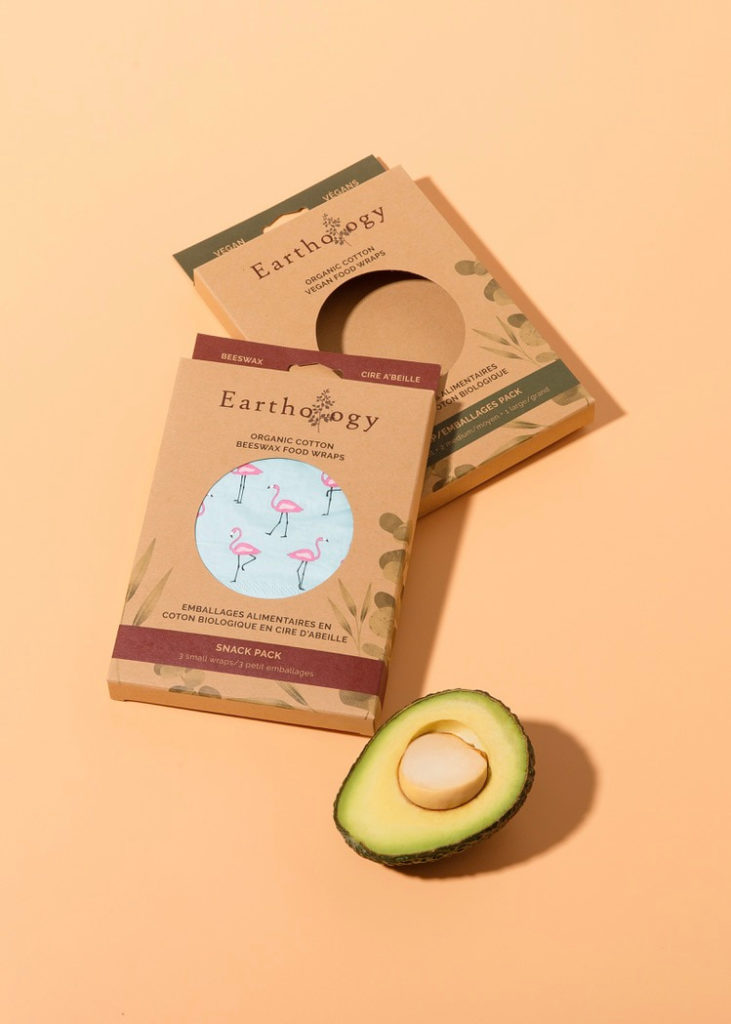
This push has driven one of the highest organizational consumers of aluminum, Coca-Cola, to completely change their plastic-based shrink wrap into paperboard packaging by this coming year!
The new technology, KeelClip, is due to reduce plastic waste by 2000 tonnes and CO2 emissions by 3000 tonnes every year.
InBev’s name-brand beer giants – Bud Light, Budweiser, and Stella Artois – are also due to follow suit by the end of 2022.
KeelClip sets a strong example to aspirants, especially when we consider the fact that 1.9 billion Coca-Cola drinks are consumed each day.
Although the sustainable packaging market is becoming progressively crowded with disruptive incumbents, there’s still great potential to wildly scale with reduced material solutions that may potentially generate astronomical revenue figures.
Considering statistics that show consumers are willing to pay more for increased sustainability, eco-friendly packaging is a great way to reduce material costs and increase sales revenue.
That additional profit margin can be re-invested into continued eco-friendly endeavors.
Compostable Packaging
Compostable bags epitomize sustainability.
The addition of the term to any product gives the potential buyer the assurance that what he or she consumes will become one with Earth upon disposal.
Biodegradability really is the end game, the pinnacle of sustainability success. We really wish everything could be biodegradable.
That includes that old beater car that’s been faithful to you since college but now requires a carburetor repair that costs more than its current market value.
Regardless, compostability isn’t a trend that’s bound to disappear anytime soon.
British beauty retailer Boots acknowledges its widespread importance and also aims to remove all its plastic pharmacy bags, replacing them with a completely compostable solution by mid 2024.
One of the last places to come to one’s mind when thinking of compostable packaging is your bathroom cupboard.
Seed Phytonutrients uses recycled plastics and materials to create a fully paper-based recyclable and compostable bottle.
And if you’re the type who loves holiday Kinder Eggs, the plantable lining of seeds nudged into the bottle exterior should also give you a pleasant surprise.
Fascinatingly, the parts of the outer shell have been connected through corrugated locks, rather than glue as was the case with the previous version.
This highlights parent company L’Oreal’s commitment to continuous and sustainable improvement.
Corrugated Packaging
Corrugated boxes and eco friendly packaging components hold an environmental advantage over other constructions.
They’re mostly made from recycled paper, are reusable, and can be recycled again. The re-usability stems from the strength of corrugation.
The end-user can sleep in peace knowing that orders arriving in corrugated boxes can be used as document holders and insulation.
The strength of corrugated boxes also protects sensitive package contents, such as produce and healthcare products.
Corrugated boxes are also a dream come true for packaging providers because of their versatility.
They can be molded into any shape and size, reducing material costs and increasing economies of scale.
One can see why corrugated product packaging is such an outstanding contributor to sustainability.
As if its aforementioned benefits weren’t enough, corrugated boxing also keeps fruit fresh for three days longer due to its antimicrobial properties.
If you’ve been keeping these eco friendly packaging options on the back burner, now is the time to bring it into the spotlight.
Corrugated box’s flexibility can allow suppliers to meet high and erratic demand in December.
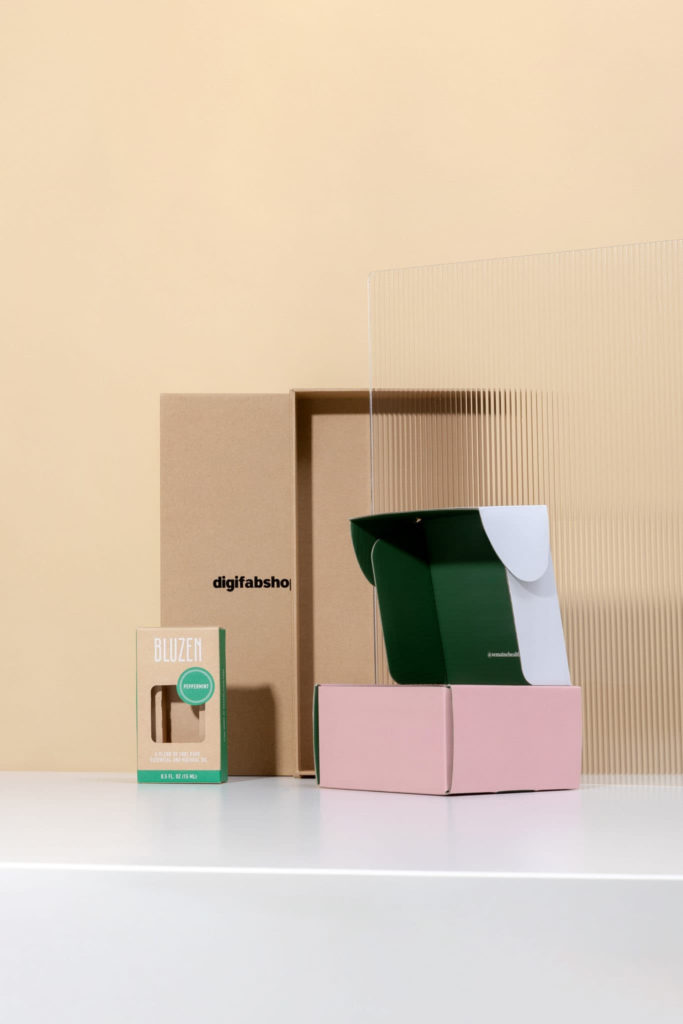
Be wary, many suppliers tend to offer corrugated boxes through a rather transactional process.
However, PakFactory’s Freedom Corrugated proprietary packaging solution gives its customers the comfort and assurance they seek in knowing that they’ll achieve the corrugated custom sustainable packaging of their dreams through one-on-one consultations.
Commitment
Actions speak louder than words.
Customers want to see packaging companies that commit to sustainability efforts in the long term.
Commitment can take the form of continuously actionable goals, and signal a form of authenticity that millennials love.
PakFactory embeds sustainable practice into the materials it sources for its custom;
Furthermore, PakFactory is proud to be part of the One Order One Tree initiative, where one tree is planted for every order received.
If you’re a business looking to communicate your dedication to environmental sourcing and production, make sure you position that content at the forefront of your master pages and social media platforms, highly visible and adjacent to your calls to action.
Forbes lists over 101 companies – many of them part of major Fortune lists – that commit to sustainable practices and packaging.
Some of the names may surprise you, but this just shows how pervasive and vital this trend is to your company’s bottom line.
If you’re determined to make a difference but might not possess the capabilities of a Fortune 500 giant, you can still effectively commit to sustainability efforts.
James Feistner, the owner of the chic Mercury Espresso Bar in downtown Toronto, absorbed a few cents per cup in additional costs to provide his customers with completely biodegradable cups.
This was 10 years ago.
Although the initiative failed due to the municipal mishandling of compostable goods, Mr. Feistner demonstrates an unwavering commitment to sustainability by continuing his search for more scalable methods.
Other independent small businesses such as bakeries and clothing stores can reduce their footprint by pushing for sleeker packages.
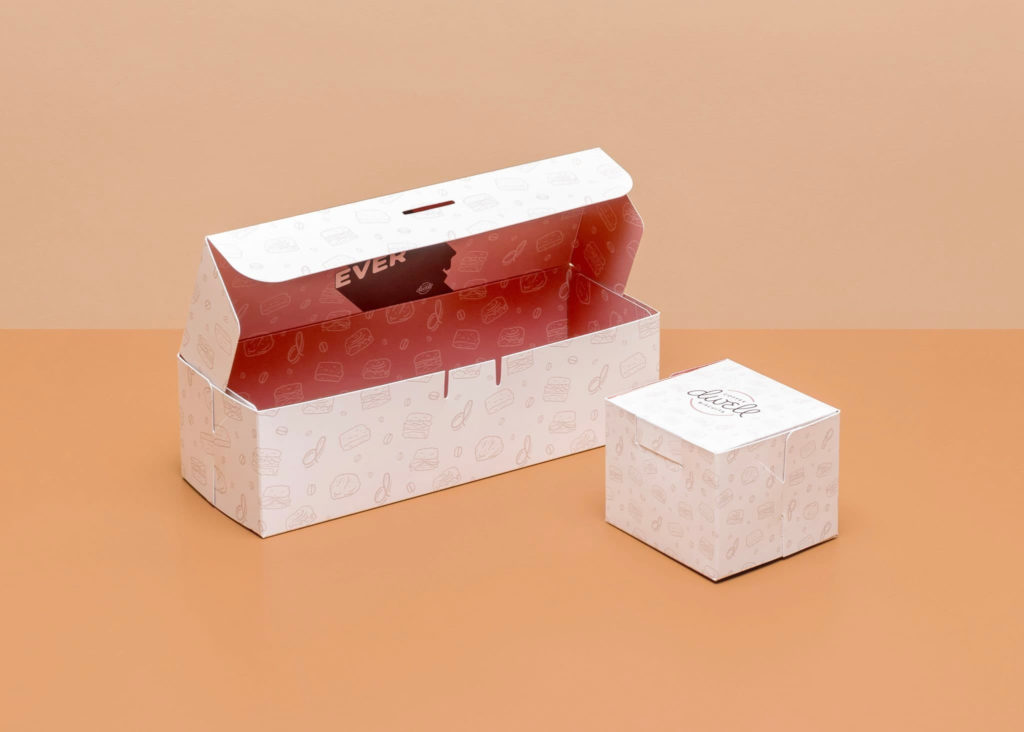
Manufacturers can follow the path of Dark Horse and offer significant packaging discounts if the customer opts for a small container or box.
As a result, the supplier saves on material expenses while the vendor lowers their distribution costs.
Who said sustainability wasn’t a win-win situation?
Anti-Microbial Packaging
The perishable nature of food has sparked numerous discussions as to how we can extend the shelf life of this basic human necessity, especially in the developed world where the amount of food waste is at significant odds with the hunger crises experienced in developing nations.
The global harms of food waste amplify in severity due to greater consumption behaviors. Hence, the need for anti-microbial ‘active’ packaging reaches an all-time high towards the New Year.
Current research suggests that essential oils and polymeric structures manufactured from shellfish have demonstrated high efficacy in the eradication of degrading organisms.
British grocer Morrisons utilizes technology that prevents bacterial growth in the linings of their reusable bags.
Additionally, with the rise of supermarkets willing to deliver your grocery right to your door, the need for customized anti-perish packaging has never been greater.
In fact, the antimicrobial packaging market is forecasted to grow by approximately half a billion US dollars per year until 2024, to reach a whopping 11.88 billion dollars.
Communicating Sustainability
Sustainability is considerably more difficult to convey when the consumer is unable to touch and feel the product off the store shelf, which has become a norm of the 2020s.
Custom packaging suppliers, designers, and manufacturers have the heavy responsibility of convincing their vendor that the product will feel and look a certain way even before a sample is sent.
Remember, your goal as a supplier is to persuade the retailer, brand, or distributor at the very first touchpoint, which is usually the website landing page.
Without a proper visually immersive depiction of your packaging solution, your sustainable sourcing and design mantra will fall on deaf ears.
Interactivity is Everything
With cost considerations kept in mind, the key is to immediately and prominently offer an interface through which the potential buyer can scroll through all physical attributes of the package, including its sustainable facets.
A great example of a packaging company that achieves this goal is Packlane, a global powerhouse in the custom design packaging sector.
By offering customers with 3D visualizations of their customizations, Packlane empowers the customer with a real sense of control over the ‘product in progress’.
On a similar note, Pakfactory takes the customer’s initial request and turns it into an intimate conversation with the sales, design, and procurement team in order to provide that customer with exactly what it wants.
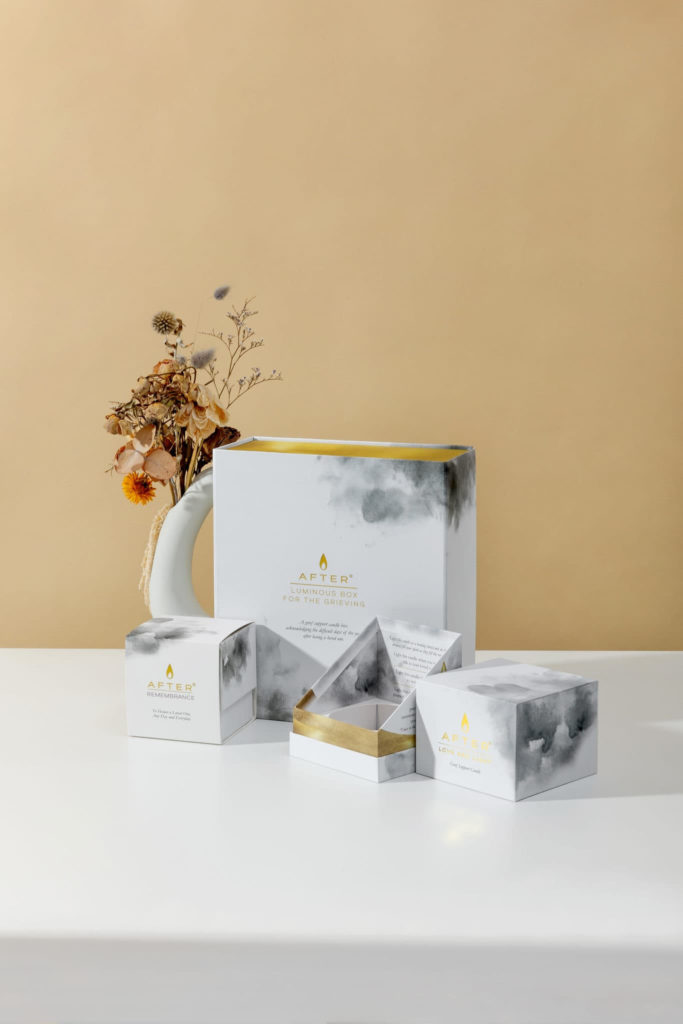
During this thorough collaborative process, the team at Pakfactory shares insights and recommendations that leave the customer delighted with a product that exceeds their expectations at every fold.
We’re highly transparent with our clients.
As an example, if we discover that a requested custom box prototype may cause the end-user to face folding or opening issues, we always make sure that is known.
At PakFactory we’re just as much of a partner as we are a supplier. If we’ve captured your curiosity, you can delve into the ‘why’ that lies behind PakFactory’s 1000+ client base here. Or check our customer stories here.
The fundamental reason why interactivity is crucial in e-commerce can be explained through our general discontentment with the physical shopping experience.
Although we may miss this now, historically we hate the logistics, the traffic, the crowd, the change rooms, missing price labels, and being hot and cold at the same time.
If we could we would eliminate these negatives, whilst retaining the ability to feel and assess our personal compatibility with the product.
We would keep the interactive elements of a regular brick and mortar shop and digitize it to eliminate the elements that we dread.
Cappasity, the technology that powers the interactive 3D visualizations of numerous large retail chains across the globe, takes your product and digitizes it so that it becomes completely interactive.
Eastern European luxury goods retailer TSUM reports that it increased its conversions by 40% on products that were digitized through the Cappasity platform.
Take into consideration the fact that over 80% of users that land on a 3D view interacts with it, and virtually 100% prefer 3D over video, one can easily visualize how profitable enhanced interactivity could be.
If there’s one product that really fits the bill for 3D-view digitization, it’s custom packaging.
Distributors, transporters, delivery firms, and even Uncle Jim who lives in that cute red house down the street would love to see how their customized boxes will appear in their respective contexts.
Think of the wide array of possibilities. With animated views and augmented reality, you could morph your packaging site into a full-fledged retail experience.
The benefits don’t end there.
As the end-user fiddles with the product’s visuals, they spend a considerably greater amount of time on your website.
The 3D experience trickles down and across to your e-commerce platform’s other pages, thereby enhancing their visibility and conversions.
The resultant increase in session duration and decrease in bounce rates sends a strong signal to Google that your site should appear more often when a user searches for what you offer.
QR Codes
Enabling your packaging with technology is almost always a win-win scenario.
QR codes can tell a story that needs a little bit more space than the surface area of your regular package.
QR codes can communicate the source of the product, its ingredients, and whether it’s been sourced from a sustainable location.
Unfortunately, QR codes have been facing a decline in usage by consumers over the last half-decade, mainly due to poor positioning.
However, QR codes have been well received in 2019, and are expected to see a full revival in 2022.
Pepsi recently partnered up with Cardi B to launch its Gift it Forward campaign, which features a QR code directing the user to cash awards that can be payed forward.
The campaign brilliantly wraps societal values, Christmas narratives, and packaging tech into a powerful incentive to consume.
The renewed increase in QR code usage can be attributed to a concurrent incline in the frequency of climate change and sustainability centered dialogue.
Nevertheless, QR codes should be implemented with desirable incentives. If the consumer perceives that their use of the QR code could either win them an award or have the brand contribute a certain donation to an eco-friendly initiative, then they would be more willing to read the sustainability story behind the product.
Smart Packaging
If you think QR codes are game-changing, feel free to check out the freshness indicating smart label video below.
These prevent food poisoning and waste by displaying the level of freshness of a packaged food item.
Freshness is determined through the intricate measurement of temperature, acidity, and the level of bacterial growth.
The custom labels can also be applied to cosmetics boxes and pharmaceutical items.
The applications are universal, making smart packaging a hot market for entrepreneurial packaging companies.
Heres 10 things you should know about smart packaging
Cultural Transformation
The 2020s have been a time of drastic change. Marginalized voices are being loudened like they never have been before from the comfort of our own homes.
Talk of cultural change can be heard audibly on social media, digital media, and through traditional mediums.
As a result, heading into 2022, the talk of change surrounding product packaging will inevitably be under the proverbial magnifying glass.
All suppliers and vendors will need to adhere to the trend of sustainable solutions in custom box design and manufacturing.
Value propositions and corporate manifestos will need to reflect the principles of sustainable thinking. Sustainable execution will require absolute consistency, as there is little room in today’s digitally connected world for failures in adherence.
Top-down and bottom-up corporate education campaigns will need to be deployed across all functions.
Operations managers and public relations will need to unite to assure that printed cardboard boxes contain messaging that aligns with the rigid ecological standards of today.
With consistent execution, your organization will garner the buy-in of the greater community.
Whether you’re a supplier, a vendor, or a customer, our top eco friendly packaging trends should leave you with actionable insights that will propel your ventures to greener pastures and bluer horizons despite the drastic changes all industries have had to face this year.






